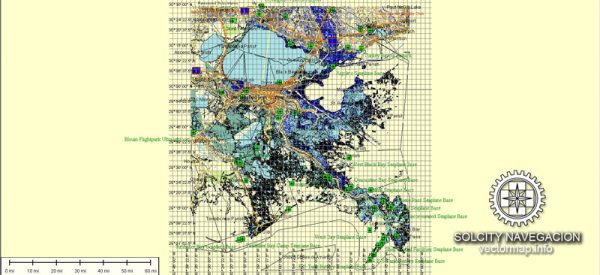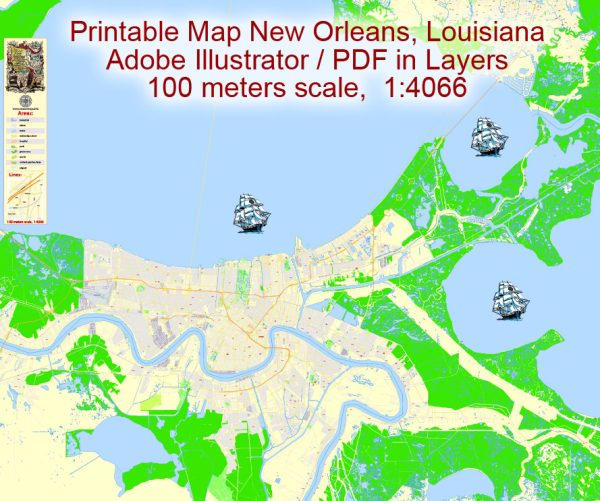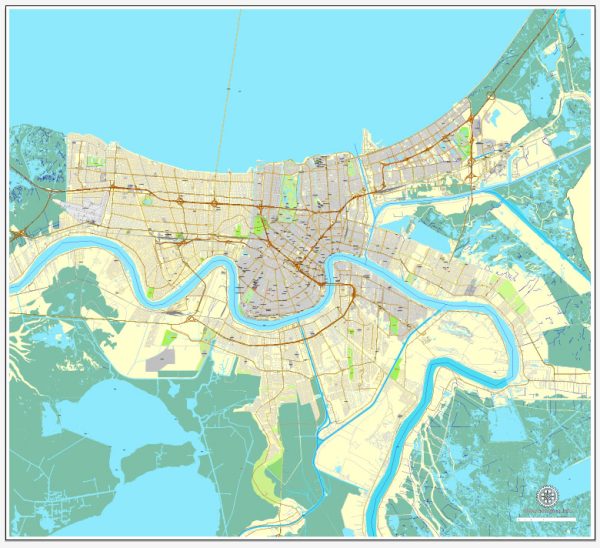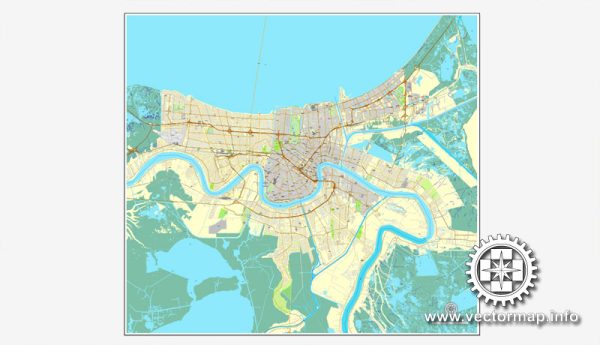New Orleans, Louisiana, has a rich and complex history of urban development that reflects the diverse cultural influences and challenges faced by the city over the centuries. The city’s unique blend of French, Spanish, African, and Creole influences has shaped its architecture, neighborhoods, and overall urban fabric. Here’s a brief overview of the key historical aspects of urban development in New Orleans:
- Colonial Period (1718-1803):
- Founding: Jean-Baptiste Le Moyne de Bienville founded New Orleans in 1718 as a French colonial outpost at the mouth of the Mississippi River.
- French Influence: The city’s original layout was based on a French-style grid plan with a central square, which is now Jackson Square.
- Spanish Rule (1763-1803):
- Cession to Spain: After the French and Indian War, France ceded the territory to Spain in 1763. Spanish influence is evident in some architectural styles and certain administrative practices.
- Faubourgs: The Spanish introduced the concept of “faubourgs” or suburbs, leading to the development of neighborhoods like Faubourg Marigny and Faubourg Tremé.
- Antebellum Period (1803-1861):
- Louisiana Purchase: The United States acquired New Orleans as part of the Louisiana Purchase in 1803.
- Cotton Economy: The city became a major hub for the cotton trade, leading to economic growth and the expansion of the urban footprint.
- Greek Revival Architecture: This period saw the rise of Greek Revival architecture, with notable examples including the Greek Revival-style columns on the Pontalba Buildings facing Jackson Square.
- Civil War and Reconstruction (1861-1877):
- Impact of the Civil War: The city faced significant challenges during the Civil War, including Union occupation. Reconstruction efforts followed the war.
- Diversification: The economy diversified beyond agriculture, and the city saw industrial development.
- Late 19th to Early 20th Century:
- Expansion and Modernization: The city continued to grow, with the development of new neighborhoods and infrastructure.
- Streetcar Suburbs: The streetcar lines facilitated the development of streetcar suburbs, allowing for residential expansion.
- 20th Century:
- Hurricane Katrina (2005): The city faced unprecedented challenges with the devastating impact of Hurricane Katrina, leading to widespread destruction and displacement.
- Rebuilding Efforts: Post-Katrina, there were extensive efforts to rebuild and revitalize the city, including the restoration of historic neighborhoods and landmarks.
- Contemporary Period:
- Cultural Preservation: New Orleans has placed a strong emphasis on preserving its unique cultural heritage, including the architecture of the French Quarter and other historic districts.
- Tourism: The city’s vibrant cultural scene, including music, cuisine, and festivals, has made it a major tourist destination.
Throughout its history, New Orleans has experienced a dynamic interplay of cultural influences, economic changes, and natural disasters, all of which have contributed to the city’s distinctive urban development. The legacy of these historical influences is visible in the architecture, street layouts, and cultural practices that make New Orleans a truly unique American city.





 Author: Kirill Shrayber, Ph.D.
Author: Kirill Shrayber, Ph.D.